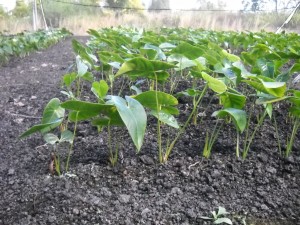Anthurium Problems: Common Problems Faced When Growing Anthurium Plants
Usually anthurium plants are very easy to grow, but sometimes you may encounter a few of these common problems when raising them. Most of the problems you will face when growing anthuriums will be the result of errors in watering, fertilizing or light levels. When growing anthuriums outdoors, pests can also be an issue, but I assume that most of you will be growing your plants indoors, so I am not going to cover pest issues.
The number one cause of problems has to do with watering. Improper watering can permit fungus to attack your plant and so it can be indirectly responsible for harming your plant. Fungus and other anaerobic bacteria grow well when air is not allowed to reach the roots of your plant.
Over watering and the use of a soil that doesn’t drain well are common issues. If your plant has stopped growing and has started producing wilted leaves, you may have a problem with fungus. You may be able to fix this by repotting your plant into a soil that drains better and by being careful not to over water your anthurium. When repotting, you may need to trim off the diseased or damaged parts of your plant.
Another big issue is over fertilizing your plant. If your plant is turning yellow or brown, it could be receiving too much fertilizer. Stop adding additional fertilizer and try to rinse out the excess fertilizer with water.
Finally, too much or too little light can also cause problems. If your plant seems to be growing slowly and producing few flowers, this could mean that it is receiving too little light, especially if its leaves are dark green. Try moving your plant to a brighter area, but never put it in direct sunlight. If your plant is getting bleached and the tips of its leaves are turning brown, it may be receiving too much light. Try moving it to an area with a little less light.

